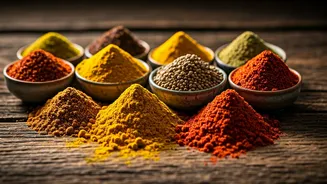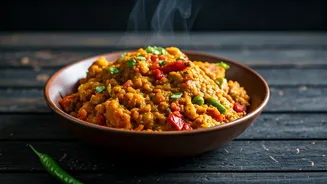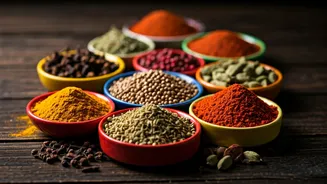Regional Culinary Diversity
India's culinary landscape is incredibly diverse, mirroring the country's varied geography, climate, and cultural influences. Each region boasts its own
distinctive cuisine, using locally sourced ingredients and unique cooking techniques. For instance, in the north, you'll find rich, creamy curries and breads, often influenced by Mughal traditions. Butter chicken and various types of naan are staples. Moving south, coconut, rice, and spices dominate, leading to dishes like dosa, idli, and sambar. Coastal areas emphasize seafood, while the eastern regions showcase dishes like fish curries and sweets made with milk and rice. The west offers a mix of vegetarian and non-vegetarian options, including the iconic Gujarati thali and the fiery flavors of Goan cuisine. This regional variety is a testament to India's rich history and cultural exchange, offering a diverse palette of flavors to explore.
Key Ingredients And Methods
Several ingredients are fundamental to Indian cooking. Spices, such as turmeric, cumin, coriander, cardamom, and chili peppers, are central to the flavor profiles of many dishes. These spices are often combined in carefully measured blends to create complex and aromatic masalas. Lentils, or dals, are a staple, providing protein and forming the base of various stews and side dishes. Rice is another cornerstone, served in many forms from plain boiled rice to biryanis and pulaos. Vegetables vary widely depending on the region and season, with everything from potatoes and cauliflower to eggplant and okra being used. Common cooking methods include sautéing, frying, grilling, and stewing, often involving the use of a tandoor oven for breads and meats. The careful balance of flavors, textures, and aromas is a hallmark of Indian cuisine, making it both satisfying and memorable.
Food's Cultural Significance
Food plays a vital role in Indian culture, going beyond mere sustenance to symbolize community, tradition, and celebration. Meals often bring families and communities together, with shared dishes fostering a sense of togetherness. Festivals and special occasions are marked by elaborate feasts, often including dishes specific to the event. The preparation and sharing of food also signify hospitality, and guests are always offered meals. Vegetarianism is widely practiced in many parts of India, reflecting religious beliefs and a respect for all life. The custom of eating with hands, using bread as a scoop to savor curries and stews, is another unique aspect of Indian dining, showcasing a deep connection to food and its communal nature. This deeply ingrained cultural significance highlights food's importance in the Indian identity.











